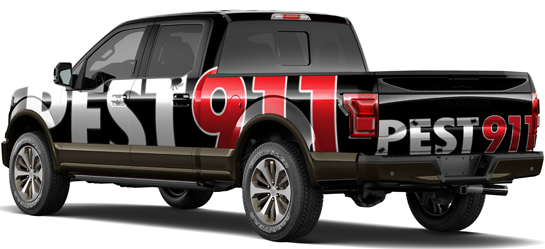How to Get Rid of White Japanese Beetle Lawn Grubs in Ocala, FL; Minimize Moisture, Professional Grub Pest Control & More
Lawns across Florida are collecting strength during this spring time. Grass roots are gathering the nutrients to make them strong and flourish. But as the spring progresses into summer and pests are invading lawns, the health of grass dwindles as pests infest the soil and devour the roots. If you know what common pests are destroying your lawn, you can fight them a whole lot better! With that in mind, we at Pest 911 would like to shine the light on grubs that may be invading your Florida lawn.
Japanese Beetle Lawn Grubs
Grubs found in lawns, often called white grubs are the larvae of Japanese beetles are white, C-shaped critters that have soft bodies with legs near their head. Living in the soil, these grabs feed on the roots of grass which leads to grass dying in patches. Grubs eventually evolve into adult beetles and emerge from soil to mate and lay eggs to multiply into more grubs, continuing the cycle.
Japanese Beetle Seasonal Life Cycle Chart:
– Spring: Awakening from winter, the grubs begin feeding on the grass roots and after their feeding frenzy the grubs transform in pupae that will later evolve into beetles.
– Summer: After pupae emerge to feed on garden foliage and flowers, they turn into Japanese beetles and lay their eggs.
– Fall: New grubs hatch from the eggs and begin feeding on the grass roots, which destroys lawn; beginning the destructive cycle all over again.
Depending on circumstances, eggs will typically hatch in approximately 2 weeks at the end of the summer. Immediately after hatching, the grubs will begin feasting in the early fall. Initially, these grubs indulge a couple of inches below the surfaces and eventually burrow deeper, approximately 8 inches.
Signs of Grubs in Your Lawn
To catch grubs in your Florida lawn, look for brown patches in your lawn, if grubs are the culprit the turf will easily lift and roll like carpet, exposing the nonexistent roots. If you see excessive birds, skunks, raccoons or moles in your yard, tearing at the grass; that is an indicator of grubs as these predators pursue grubs as a delicacy.
Lawn Grub Prevention & Control
– Assess nearby lawns. If you learn a neighbor has a grub problem, the emerging beetles will likely migrate toward your grass to continue the cycle.
– Minimize moisture. Consider that grubs need moisture. Populations peak in soil that’s consistently moist. Female beetles lay eggs in well-maintained and moistened turf and the grubs hatch-lings develop better in preferable conditions. Drought summers will slow grub activity down as well as even disrupt the egg hatching. If you have a problem with grubs, contact Pest 911 and let our specialists rescue your lawn!


